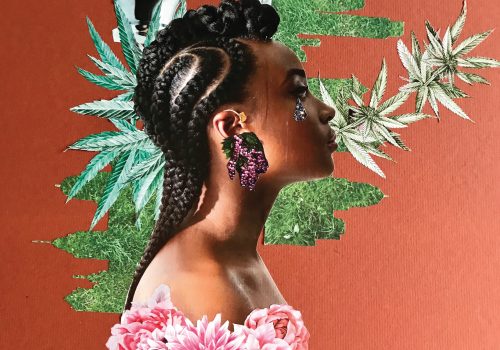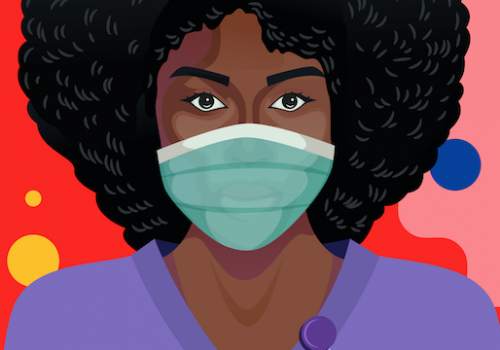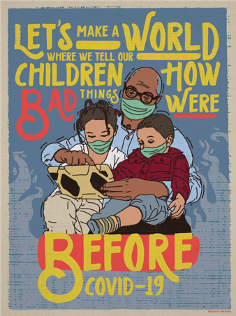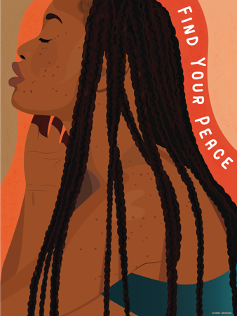Throughout centuries, artists from Francisco Goya to Frida Kahlo have created art for the purpose of healing, unleashing it as a tool for gratitude, compassion, love, and solidarity in crises of health—both personal and collective. The expressionist artist Edvard Munch painted his way through the Spanish Flu pandemic of 1918. “I see that my own hands can make/ The world that’s in my mind,” wrote Langston Hughes, of the power of art in crises. Now, amid COVID-19 and the movement for racial justice, the current generation of artists is spreading compassion and healing through their works: painting, sculpture, textiles, drawings, and design.
Much of it speaks not only to coronavirus but to the deeper crisis facing America: the disease of racial inequality and injustice. These twin crises are interlinked, exacerbated by each other, and bound by the common denominator of health inequity. Studies have repeatedly shown the ways in which African-Americans in particular, and other people of color, are hit harder by health issues, whether epidemic or endemic. Lower-income communities of color, where social distancing is a luxury, have faced a higher infection and death rate from the virus. When the coronavirus crisis hit, Amplifier, a design lab that has historically built art to amplify grassroots movements (including designing the posters for the 2016 Women’s March) launched a call for artistic submissions that challenge dominant narratives in media and society.
Art is flourishing not only online but on our streets, too. In Austin, Texas, artist Chris Rogers has honored healthcare workers as superheroes in this powerful mural featuring Storm and Superman.
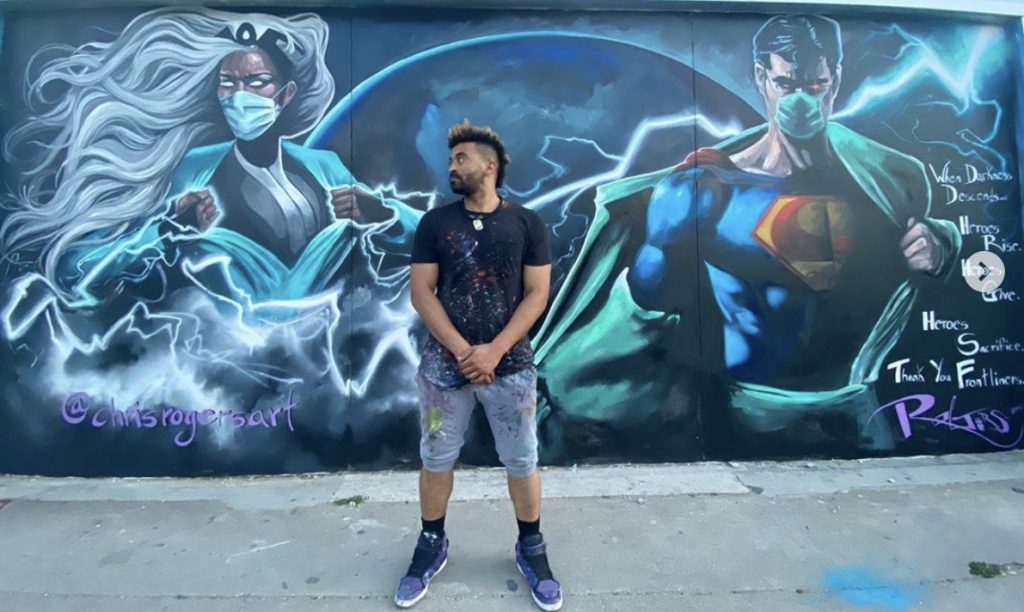
“When darkness descends, when the future is uncertain, when hope is dwindling and Doomsday is prepped, there are those that punch in when all have punched out. Heroes. Heroes Rise. Heroes Give. Heroes Sacrifice. Thank you front-liners, one and all,” he wrote, telling Spectrum News that he “also wanted to give a shout-out to all the doctors and nurses of color.”
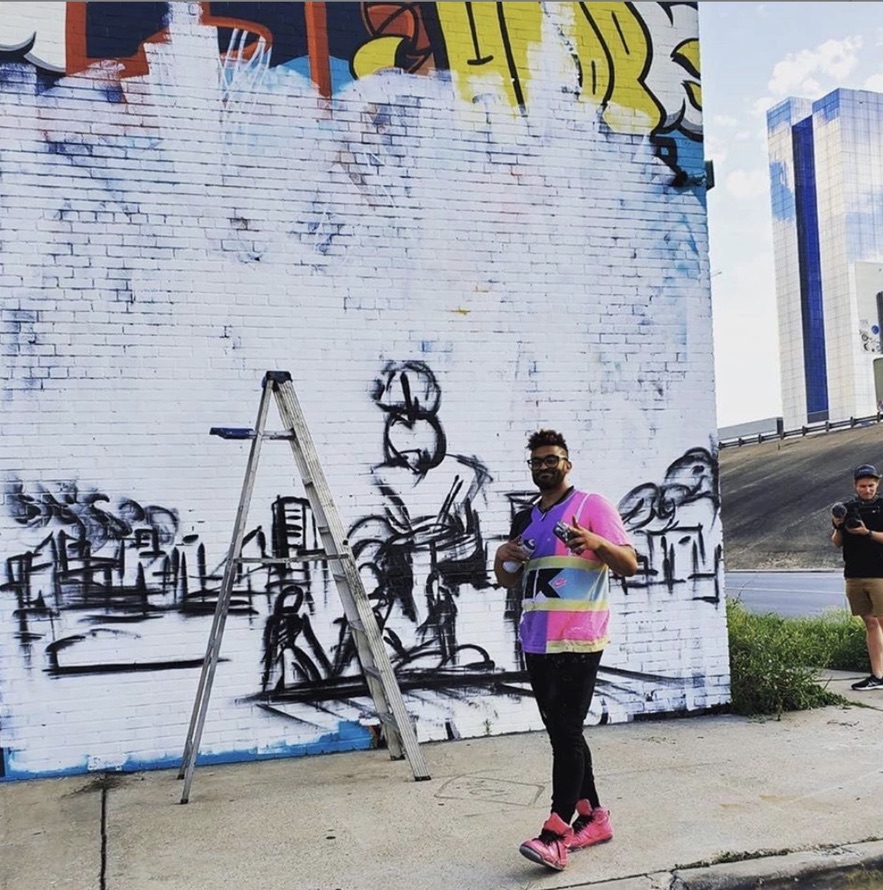
Now, Rogers is honoring the Black men and women recently lost to police brutality. With the help of the entire community, which is stepping up to offer donations, he is painting a mural dedicated to George Floyd, Breonna Taylor, Ahmaud Arbery, Sandra Bland, Walter Scott, Philando Castile, Michael Brown Jr., Trayvon Martin, Tamir Rice, Eric Garner, Sean Bell, and Emmett Till and the many others killed in racially-motivated attacks. “There’s not even enough walls in Austin for all these people,” Rogers told KVUE News.
So he’s beginning by dedicating it to George Floyd. “If he can’t breathe, then we can’t breathe,” Rogers said.
This is a project from the Atlantic Council’s Adrienne Arsht-Rockefeller Foundation Resilience Center and the Digital Forensic Research Lab.
Share your #ResilienceStories and videos with us at resilience@atlanticcouncil.org and join us in sharing on social media: @atlanticcouncil, @ArshtRock, @DFRLab.
Subscribe to Stories of Resilience
Subscribe here for weekly stories, which will bring inspiration, optimism and solutions centered around people and our shared human experience in times of pandemics, migration, disasters and a changing climate.

The Adrienne Arsht-Rockefeller Foundation Resilience Center will reach one billion people with resilience solutions to climate change, migration, and security challenges by 2030. We will focus our efforts on individuals, communities, and a broad spectrum of governments and institutions to help them, and their constituencies and stakeholders, better prepare for, navigate, and recover from shocks and stresses. We will help build a more resilient world.
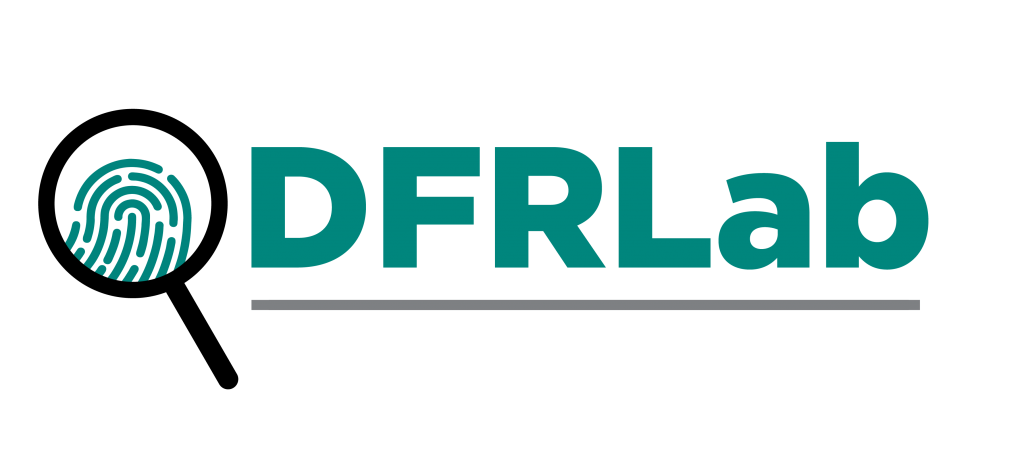
The Atlantic Council’s Digital Forensic Research Lab (DFRLab) has operationalized the study of disinformation by exposing falsehoods and fake news, documenting human rights abuses, and building digital resilience worldwide.
Image: Photo courtesy of Chris Rogers via Instagram
